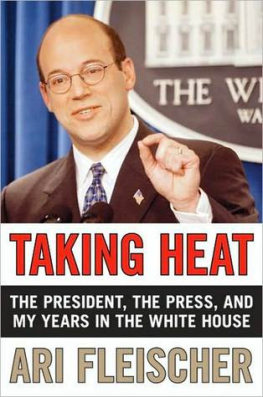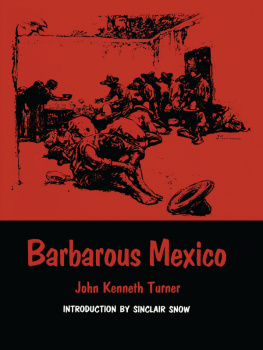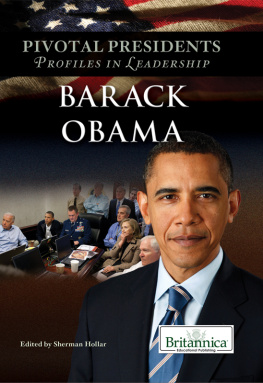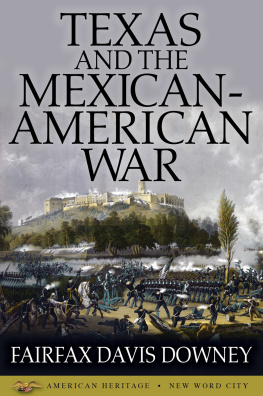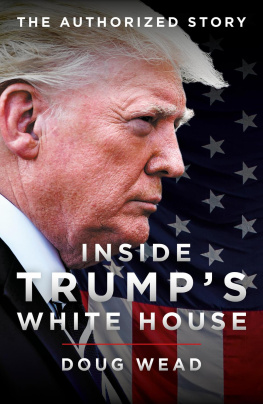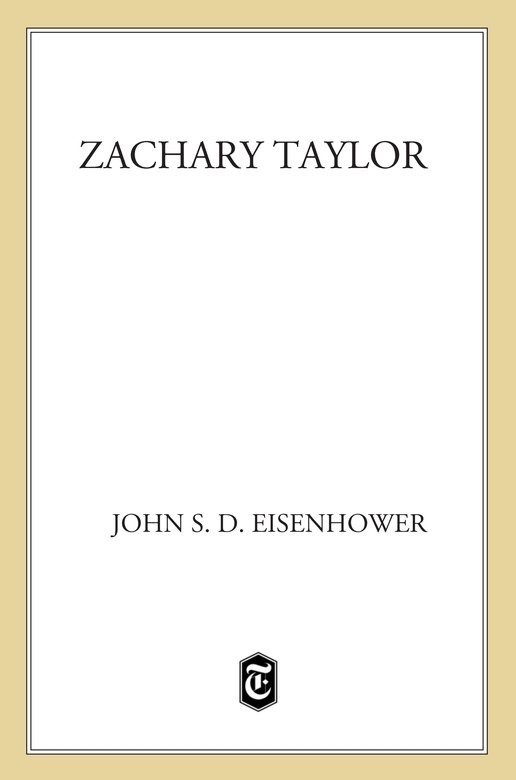
My wife, Joanne, is always at the top of the list of those who make my books possible. Her involvement in this biography is a bit less than in the other books because she is immersed in writing her own book about President Woodrow Wilson and his times. However, in her researches at the National Archives and Library of Congress, she has always kept an eye out for items pertaining to Zachary Taylor, and she passes them on. In this she was generously assisted by Jeffrey M. Flannery, head of the Manuscript Division, Library of Congress. And not to be ignored is her tolerance of the traumas that any book brings to a household.
Louis D. Rubin Jr., Distinguished Professor of English Emeritus at the University of North Carolina, very generously went over the entire manuscript, as he has done with my other books, and caught me with some real bloopers. I have come to rely on him not only for double-checking but for assurances.
Dorothy (Dodie) Yentz, as always, is the person who makes my books possible, and this one is no exception. Her knowledge of English mechanics, her keen eye, and remarkable expertise in computers have taken months off the production of this book.
Others have been helpful as well. Mr. Rodney A. Ross, of the National Archives, produced a hard-to-find report on the King mission to California, for which I am grateful.
Mitchell Yockelson, also of the National Archives, is my backup in that organization and never hesitates to help in any request. Among other contributions, he guided me to Rodney Ross, mentioned above.
Professor Sean Wilentz, the general editor of this series, and Paul Golob, the editorial director of Times Books, were unusually helpful, especially in dealing with the political issues of Taylors presidency.
Dr. Richard Striner, professor of history at Washington College, Chestertown, Maryland, kindly took the time to look over critical chapters on American politics, much to my benefit.
Chris Robinson. Although this book required only one map, Chris, the cartographer on previous books, lent his usual zeal and expertise, for which I am grateful.
They Fought at Anzio
General Ike: A Personal Reminiscence
Yanks: The Epic Story of the American Army in World War I
So Far from God: The U.S. War with Mexico, 18461848
Intervention!: The United States and the
Mexican Revolution, 19131917
Allies: Pearl Harbor to D-Day
Agent of Destiny: The Life and Times
of General Winfield Scott
Strictly Personal
The Bitter Woods
JOHN S. D. EISENHOWER is a retired brigadier general, U.S. Army Reserve, a former U.S. ambassador to Belgium, and the author of numerous works of military history and biography, including General Ike: A Personal Reminiscence, They Fought at Anzio, Yanks: The Epic Story of the American Army in World War I, The Bitter Woods, and So Far from God: The U.S. War with Mexico, 1846 1848 . He lives in Maryland.
His death was a public calamity. No man could have been more devoted to the Union or more opposed to the slavery agitation, and his position as a Southern man and a slave-holder, his military reputation and his election by a majority of the people of the states would have given him a power in the settlement of these questions which no President without these qualifications would have possessed.
Thomas Hart Benton
Old Bullion may have been carried away in his praise of Taylors innate political abilities, but he knew his politics, and he owed Taylor no such compliments. Furthermore, a great many of Taylors contemporaries agreed with him. At the very least, had Taylor lived and been reelected, as seems likely, the country would have been spared the dismal presidency of Franklin Pierce, and history could well have been different.
Despite the conjecture over Taylors potential for saving the Union, however, he will still be remembered more for his exploits on the battlefield than for the wisdom of his conduct of the presidency. In that respect, his experience resembled the way Americans viewother U.S. military presidents, of which there have been only fiveWashington, Jackson, Taylor, Grant, and Eisenhower in chronological order. Granted, the experiences of these men varied considerably while in the army, but the very nature of the military ensured that they would have some characteristics in common. Notably, they shared a reluctance to enter the political arena in the first place, a futile ambition to stay above politics and be president of all the people, and a tendency to be too trusting of their associates in government, most of whom they were unfamiliar with on entering office.
In person, Taylor was an enigma, causing opinions of him to vary widely. Dangerous as it is to theorize on such matters, it seems possible that this inconsistency in Taylors makeup stemmed from the fact that Taylor actually lived two lives. In one life he was born to privilege, a civilian planter, in which pursuit he was uniformly successful. He was blessed with a happy home life. His wife, Margaret, was devoted to him and, despite a genteel upbringing, bore the hardships of small posts on the frontier, so much so that Taylor once remarked, She was a better soldier than I. That aspect of Taylors life brought out his gentler side.
Taylors military career, however, was a different story. Until the Mexican War made him a national hero, it was disappointing. Men such as Alexander Macomb, Winfield Scott, Edmund P. Gaines, and John E. Wool spent the years between the War of 1812 and the Mexican War as general officers or colonels. Taylor, equally deserving, was reduced from the rank of major to captain after the War of 1812 and resigned in a pique. Reinstated after a year, his journey from major to colonel (with a brevet rank of brigadier general) was long and arduous. The contrast between Taylors two livescivilian and militarydoubtless had an effect on him. He seemed suspicious of his fellows who shared his lifes calling.
Circumstances have contributed much to our inability to understand Taylor better as president. His personal papers, unfortunately, were lost during the Civil War when Union soldiers destroyed the home of Taylors son at Baton Rouge. Richard Taylor was a majorgeneral in the Confederate Army, and he had stored his fathers papers in that ill-fated mansion. The Union soldiers presumably had no idea that they were depriving history of priceless letters and documents.
And Taylors time in office was short. He had served in the White House for only sixteen months before his untimely death, and his tenure occurred during a time of political turmoil and passion, where the critical battles were being fought in Congress. As a result, the only cause Taylor espoused that came to fruition before he died was the signing of the Clayton-Bulwer Treaty between the United States and Britain, a matter that fell exclusively in the executive purview. The issues of California statehood, settling the boundary dispute between Texas and New Mexico, and statehood for New Mexico on the basis of local sovereignty, all of which Taylor had recommended in his State of the Union address in December 1849, were still matters of violent controversy.
Soon after Taylors death, however, these issues were solved, though only temporarily, by the enactment of a series of five laws known collectively as the Compromise of 1850. The compromises provisions were nearly identical to those proposed earlier in the year by Henry Clay and embodied in a single measure, known at that time as the omnibus bill. That effort had been doomed to defeat; there were enough men with strong feelings about one issue or another who would vote against approving the entire package.





